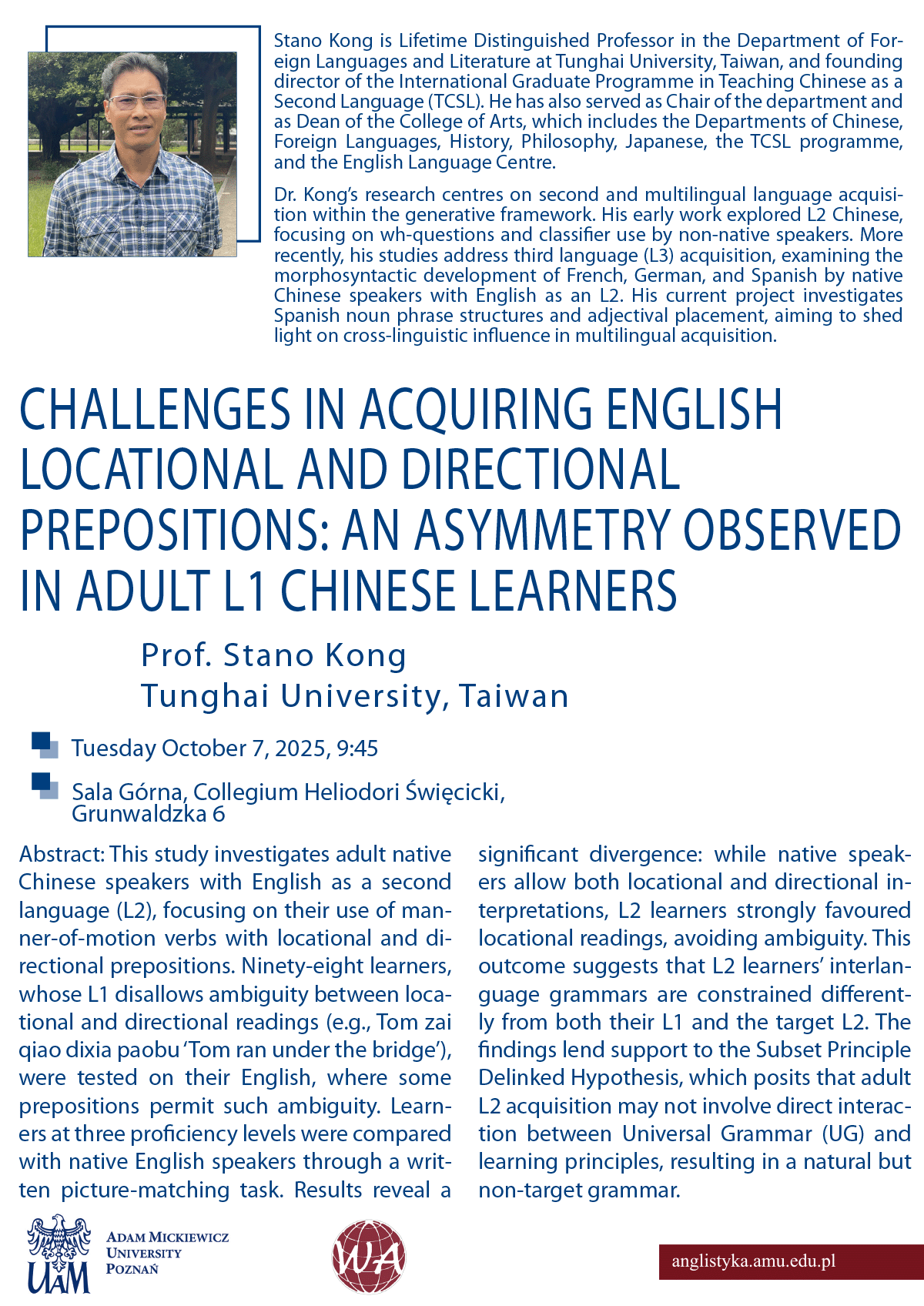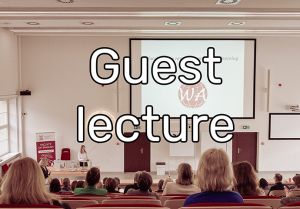Time: Tuesday 7 October 2025 @ 09:45
Venue: Sala Górna, Collegium Heliodori Święcicki, Grunwaldzka 6
Speaker: Prof. Stano Kong (Tunghai University, Taiwan)
Challenges in acquiring English locational and directional prepositions: an asymmetry observed in adult L1 Chinese learners
Abstract
This study investigates adult native Chinese speakers with English as a second language (L2), focusing on their use of manner-of-motion verbs with locational and directional prepositions. Ninety-eight learners, whose L1 disallows ambiguity between locational and directional readings (e.g., Tom zai qiao dixia paobu ‘Tom ran under the bridge’), were tested on their English, where some prepositions permit such ambiguity. Learners at three proficiency levels were compared with native English speakers through a written picture-matching task. Results reveal a significant divergence: while native speakers allow both locational and directional interpretations, L2 learners strongly favoured locational readings, avoiding ambiguity. This outcome suggests that L2 learners’ interlanguage grammars are constrained differently from both their L1 and the target L2. The findings lend support to the Subset Principle Delinked Hypothesis, which posits that adult L2 acquisition may not involve direct interaction between Universal Grammar (UG) and learning principles, resulting in a natural but non-target grammar.

About the speaker
Stano Kong is Lifetime Distinguished Professor in the Department of Foreign Languages and Literature at Tunghai University, Taiwan, and founding director of the International Graduate Programme in Teaching Chinese as a Second Language (TCSL). He has also served as Chair of the department and as Dean of the College of Arts, which includes the Departments of Chinese, Foreign Languages, History, Philosophy, Japanese, the TCSL programme, and the English Language Centre.
Dr. Kong’s research centres on second and multilingual language acquisition within the generative framework. His early work explored L2 Chinese, focusing on wh-questions and classifier use by non-native speakers. More recently, his studies address third language (L3) acquisition, examining the morphosyntactic development of French, German, and Spanish by native Chinese speakers with English as an L2. His current project investigates Spanish noun phrase structures and adjectival placement, aiming to shed light on cross-linguistic influence in multilingual acquisition.
